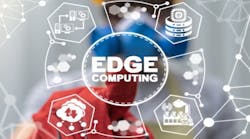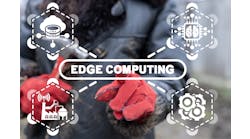With the recent news that Lumen Technologies is expanding its edge-computing services into Europe, we got to thinking about edge adoption domestically vs. across the pond. Here, we connect with Steve Grabow, Lumen Technologies senior vice president of edge computing, to get his perspective at this moment of growth. Take a look…
Smart Industry: What are the most drastic differences with edge adoption in the industrial space domestically vs. Europe, Asia and other markets?
Steve: Data sovereignty and privacy considerations are key drivers for adoption of edge computing in Europe and many other countries globally. GDPR and other data-privacy laws can prohibit code or data from existing outside specific geographic boundaries. This can constrain data and analytics teams from adopting centralized/cloud-based environments. By localizing analytics in edge environments, data remains close to its originating location, increasing the likelihood of compliance and decreasing the level of risk to businesses.
Smart Industry: Why is this the case?
Steve: Vast amounts of data is produced by IoT, sensors, cameras and other technology at the customer premises. Edge computing offers efficiency and performance opportunities that make it an attractive alternative or complementary venue.
For example, retailers are looking to video analytics, tied to point-of-sale systems that manage inventory shrinkage. Imagine a self-checkout where a customer does not need to scan an item before placing it in the bagging area. Video analytics are required to identify the input action. This action then triggers a review of items that have been scanned within the point-of-sale system. These systems must work together in real time to gather, analyze, and act on the data to ensure the experience was as expected.
Speed is critical to optimize the customer experience and reduce loss. If the system takes too long to interpret the action, the result will be a poor customer experience or continued inventory shrinkage. Now imagine this at scale across multiple lanes and hundreds of shoppers per day. The application must work through an immense amount of data in milliseconds, which can only be supported by edge computing to achieve the desired outcomes.
Smart Industry: What about differences with edge-computing adoption among manufacturing verticals domestically and globally?
Steve: The motivation for edge-computing adoption among manufacturers is consistent globally. Manufacturers need compute power closer to where data is generated to turn connected devices into smart systems. And they need ultra-low latency to ensure real-time systems control.
Quality assurance is the lifeline of a manufacturing facility. Failure to identify product that is out of specification quickly results in loss of time and raw material. It introduces rework. It also can lead to equipment failure and can compromise worker safety. A factory line that goes down, even for a short period of time, can cost a company millions of dollars.
Fine-tuning the automation and reducing the variation in output results in optimal productivity. The systems that collaborate to analyze and tune automation need to be perfectly synced. Moving the compute farther from the point of production increases risk to the system. It is for this reason that most smart-manufacturing applications reside on the premises. However, IT-infrastructure management is not necessarily a core competency to manufacturers. Edge computing can help solve these challenges by providing a managed cloud solution, on the premises or in an edge datacenter, to provide the proximity and resiliency needed in a familiar cloud model.
Smart Industry: What do you see changing with edge computing in the industrial space in the coming years?
Steve: Lumen is investing in edge computing. We see this as an immense growth area and expect adoption of edge computing to grow in the industrial space, as well as numerous other industries, over the next few years.



